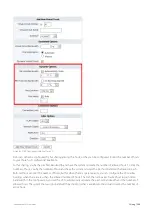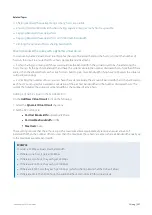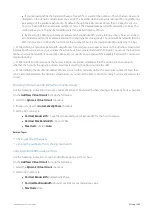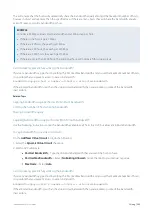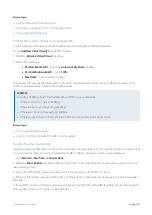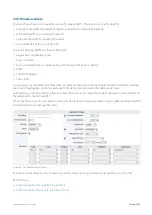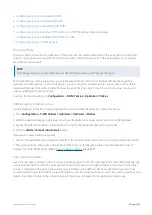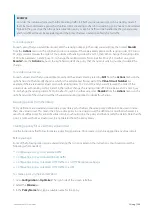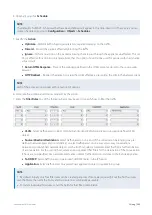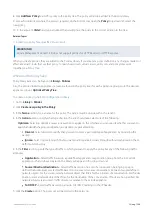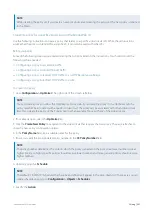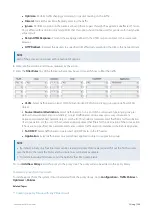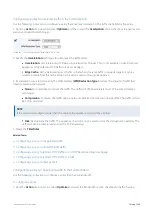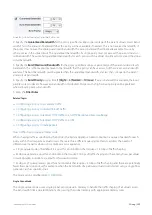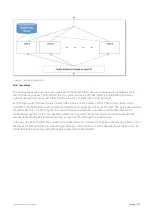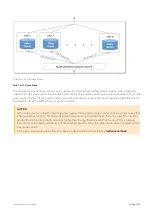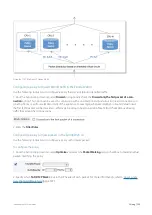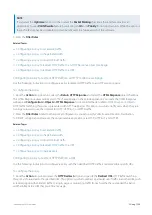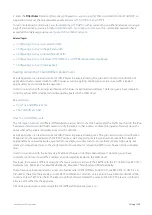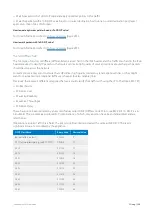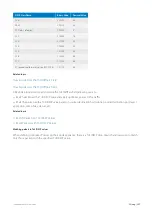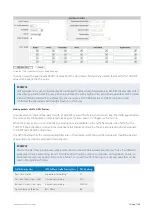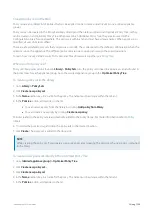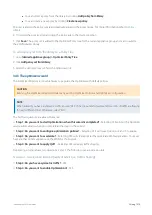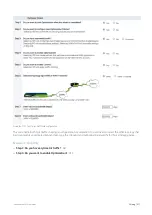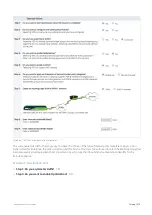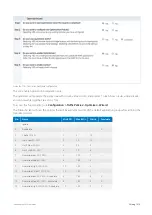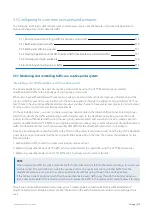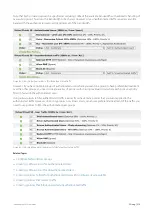
Exinda Network Orchestrator
3 Using
|
300
Screenshot 134: Settings in the Optimizer>Policies tab.
2.
Specify the
Guaranteed Bandwidth
for the policy specified as kbps or percentage of the parent virtual circuit's band-
width. This is the amount of bandwidth that the policy will have available if needed. This is not reserved bandwidth. If
the policy does not use the entire guaranteed bandwidth, the excess bandwidth will be made available for use by
other policies in the virtual circuit. The guaranteed bandwidth of a single policy must not exceed the parent virtual cir-
cuit bandwidth. The sum of all guaranteed bandwidths for each policy within a virtual circuit must not exceed the virtual
circuit bandwidth.
3.
Specify the
Burst (Maximum) Bandwidth
for the policy specified as kbps or percentage of the parent virtual circuit's
bandwidth. This is the maximum amount of bandwidth that the policy can have access to if there is excess bandwidth
available. The burst bandwidth must be greater than the guaranteed bandwidth, and less than or equal to the parent
virtual circuit bandwidth.
4.
Specify the
Burst Priority
ranging from
1 (High)
to
5 (Normal)
to
10 (Low)
. If excess bandwidth is available, the burst
priority is used to decide how excess bandwidth is distributed. Policies with a higher burst priority will be preferred
when allocating excess bandwidth.
5.
Enter the
Filter Rules
.
Related Topics
Configuring a policy to accelerate traffic
Configuring a policy to discard (block) traffic
Configuring a policy to redirect HTTP traffic to an HTTP Response object webpage
Configuring a policy to redirect HTTP traffic to a URL
Configuring a policy to mark packets
How traffic-shaping queue modes work
When shaping traffic as specified by the policies, the Exinda Appliance needs to maintain a queue of packets for each
policy within their respective virtual circuits. There are three different queuing methods to address the needs of
different use scenarios when using a multi-processor appliance.
Single queue mode is the default. It is good for environments that require < 1.5 Gbps of traffic shaping.
Multi queue mode is good for environments that require 10 Gbps of traffic shaping and have many flows per virtual
circuit. Education institutions are ideal for this queuing mode.
Multi per VC queue mode is good for environments that require < 5 Gbps of traffic shaping and there are potentially
fewer flows per virtual circuit, for example, when the bandwidth of a particular virtual circuit is tested using a single-flow
generator, such as speedtest.net.
The mode can be modified via
Single Queue Mode
The single queue mode uses a single global policy queue in memory to handle the traffic shaping of all virtual circuits.
The bandwidth limit is due to limitations of accessing the global memory with appropriate memory locks.
Summary of Contents for EXNV-10063
Page 369: ...Exinda Network Orchestrator 4 Settings 369 ...
Page 411: ...Exinda Network Orchestrator 4 Settings 411 Screenshot 168 P2P OverflowVirtualCircuit ...
Page 420: ...Exinda Network Orchestrator 4 Settings 420 Screenshot 175 Students OverflowVirtualCircuit ...

